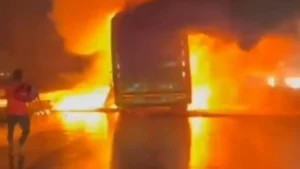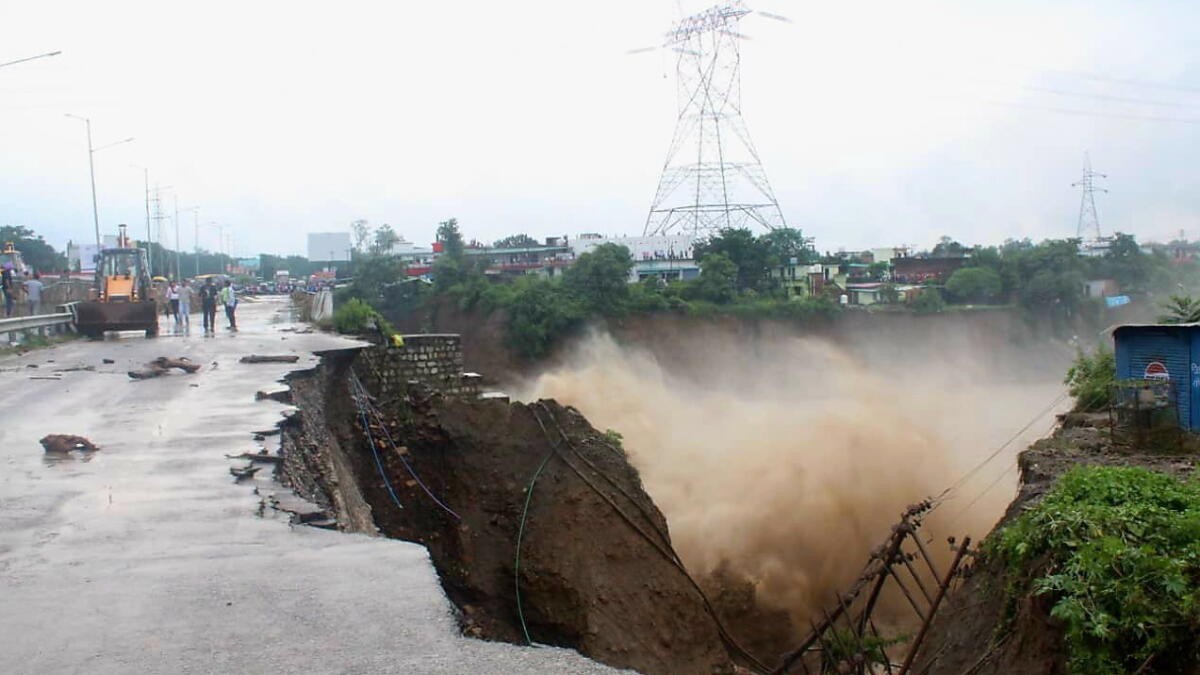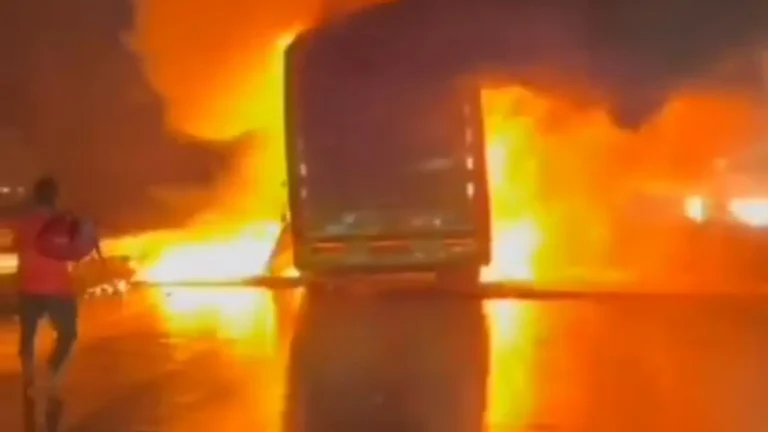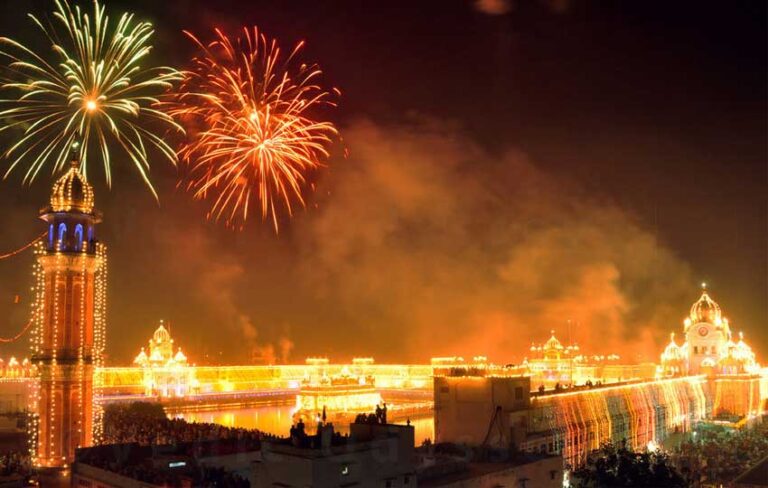Dehradun, Uttarakhand – The usually calm valleys of Dehradun Flood turned chaotic this week as sudden cloudbursts and hours of relentless rain caused devastating floods across the district. Within a few hours, quiet rivers became raging torrents, roads vanished under water, and hundreds of families were forced to flee their homes.
What started as heavy rainfall late at night quickly grew into one of the most destructive flood incidents Dehradun has seen in recent years. As rescue teams work through mud and debris to reach stranded residents, the full scale of the disaster is slowly emerging.
How the Dehradun Flood Struck
According to local officials, rain began pouring heavily in the upper hill areas around midnight. By dawn, several rivers and small streams that pass-through Dehradun Flood , including the Sahastradhara and Tamsa, had swollen dangerously. Water swept into nearby markets, residential colonies, and schools before anyone could prepare.
In low-lying areas like Maldevta, the sudden surge of water washed away roads and small bridges, cutting off whole communities. Shops in the Sahastradhara area were badly damaged as water rushed through the market lanes, carrying mud, rocks, and broken vehicles. In Paunda, the campus of a local institute was flooded so quickly that nearly 200 students had to be rescued by disaster response teams using ropes and boats.
By morning, major traffic routes in and around Dehradun were blocked by water logging or landslides. Even the popular Tapkeshwar Mahadev Temple was partly submerged, with water covering its courtyard and flowing dangerously close to the main shrine.
Human Toll and Widespread Damage
While official numbers are still being confirmed, local authorities say several people are feared missing after being swept away by fast-moving water in different parts of the district in Dehradun Flood. Rescue workers have already recovered some bodies from the debris. Many families spent the night on rooftops or higher ground as floodwater entered their homes.
Beyond the human tragedy, the economic damage is also severe. Dozens of small shops, hotels, and homes have been destroyed or heavily damaged. Vehicles parked on the roadside were swept away or buried under mud. Crops in surrounding rural villages have been flattened, threatening the livelihood of farmers who depend on a short growing season.
Essential services are struggling to function. Electricity supply has been cut in several flood-hit zones to prevent electrocution, and water pipelines have burst in a few colonies. Mobile networks and internet services were disrupted for several hours, making it harder for people to contact loved ones or call for help.
Government Response on a War Footing
The Uttarakhand government has deployed the State Disaster Response Force (SDRF) and National Disaster Response Force (NDRF) teams across Dehradun Flood. Soldiers, police, and local volunteers are working together to rescue stranded residents, distribute relief supplies, and clear blocked roads. Helicopters are on standby in case airlifts are needed from remote hilly areas.
Chief Minister Pushkar Singh Dhami visited some of the affected zones and assured people that the state government is doing everything possible to protect lives. He appealed to residents living near rivers or on unstable hillsides to move to safer locations until the weather improves. Temporary shelters and food camps have been set up for those who lost their homes or are unable to return to them yet.
The district administration has also ordered all schools and Anganwadi centres to remain closed for the next few days as a safety measure. Medical teams have been sent to relief camps to prevent outbreaks of waterborne diseases such as cholera, jaundice, and diarrhoea.
Why Dehradun Is So Vulnerable
Experts say a combination of geography and human activity makes Dehradun highly vulnerable to floods. The district sits in a valley surrounded by steep hills. When heavy rainfall occurs, water quickly runs down these slopes and gathers in the low-lying areas, often faster than drainage systems can handle.
Rapid urbanization has worsened the situation. Over the years, construction has expanded into river floodplains and natural drainage paths, leaving water with nowhere to go. Weak bridges, clogged drains, and unplanned road construction all add to the damage when extreme weather hits.
Climate change may also be playing a role. Meteorologists have noted a rise in short, intense rain spells sometimes called “cloudburst-like” events which can release massive amounts of rain in just a few hours. These events are becoming more frequent in the Himalayan region, putting towns like Dehradun at growing risk.
The Road to Recovery
While floodwaters are slowly beginning to recede in some parts of Dehradun, the road to recovery will be long and difficult. Repairing roads, bridges, and power lines could take weeks. Many small business owners who lost everything will need financial support to rebuild. Farmers whose crops were washed away will require government compensation to survive the coming months.
Still, the spirit of local residents has shone through the disaster. Many people are opening their homes to neighbours who lost theirs. Volunteers are distributing food packets, water bottles, and blankets. Local youth groups are helping clean up streets and remove fallen trees.
Officials have promised a full assessment of damage and long-term measures to prevent such disasters in the future. Experts are calling for stronger flood forecasting systems, stricter rules on construction in flood-prone zones, and large-scale tree planting on hillsides to slow down rain runoff.
The Dehradun Floods
The Dehradun Flood in district are a stark reminder of how fragile mountain cities can be in the face of extreme weather. In just a single night, lives were lost, homes destroyed, and years of development washed away.
Yet amid the chaos, Dehradun Flood has shown remarkable courage. As rescue operations continue and rebuilding begins, the people of this valley city are determined not just to recover from this disaster but to become stronger and better prepared for whatever the future brings.
